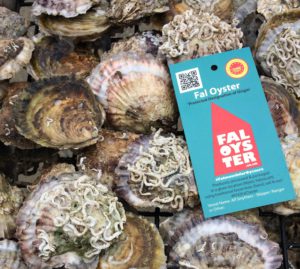Drag has moved far beyond the stage, reshaping how industries see creativity, identity, and self-expression. Once considered underground, drag has reached global audiences through television, streaming, and social platforms. Its unapologetic boldness, humor, and artful storytelling have turned drag into a cultural force that brands and businesses cannot ignore.
Companies across industries now draw inspiration from drag for campaigns that break conventions. The exaggerated fashion, fearless confidence, and witty personas resonate with audiences looking for authenticity and flair. Instead of sticking to safe marketing strategies, brands are using drag-inspired aesthetics to spark conversations and connect with audiences who value inclusivity and originality.
Impact on Fashion and Design Trends
Drag culture has had a clear influence on fashion. Designers often draw from drag’s fearless use of color, bold silhouettes, and dramatic glamour to create looks that break away from tradition.
Brands like Moschino and Marc Jacobs have openly embraced drag aesthetics, featuring performers in their campaigns and shows. Even mainstream fashion weeks in cities like New York and Paris have highlighted drag artists on the runway, proving how deeply this culture has reshaped the industry.
Retail spaces have also followed suit. Stores use dramatic lighting, oversized displays, and neon palettes to create the same sense of spectacle found in drag performances. Sephora, for instance, has invited drag queens for in-store events, while high-street fashion brands like H&M have launched collaborations that celebrate gender-fluid style.
Business Strategies Embracing Drag Energy
Businesses are tapping into drag culture to bring fresh energy into their strategies. Big brands have started working directly with drag performers, not as a gimmick, but as genuine ambassadors who connect with diverse communities.
A good example is RuPaul’s long-running collaboration with MAC Cosmetics, which helped position the brand as bold and inclusive. Similarly, Taco Bell have hosted drag brunches and performances to make their campaigns stand out in ways that feel fun and memorable.
Live events and pop-ups also show how drag is influencing marketing. For instance, Google has featured drag performers in Pride campaigns, using their presence to spotlight creativity and inclusion. These strategies work because they combine performance and storytelling with authenticity, turning marketing into something people actually want to engage with.
Online Gaming and Drag’s Influence
The gaming world has been quick to pick up on drag culture’s vibrant energy. Popular titles like The Sims 4 allow players to explore gender-fluid fashion and bold character design. Fighting games such as Tekken and Street Fighter have introduced flamboyant outfits and dramatic personalities that feel inspired by the stage. Even indie games like 2064: Read Only Memories celebrate queer identity and colorful aesthetics that align closely with drag artistry.
This influence has also carried over into casino-style gaming. Many online casino platforms are incorporating vibrant colors into their slot themes to reflect drag’s over-the-top glamour and theatrical style. Games like Neon Fruit and Jammin’ Jars stand out with rainbow palettes, glowing pinks, deep violets, and bold neon accents. The result is an experience that feels lively and playful.
The connection between drag and gaming is becoming even clearer as performers join the streaming world, appearing on Twitch or in esports commentary. Their presence mixes performance art with competitive play, proving that gaming communities can be just as diverse and colorful as the culture that inspires them.
Streaming Platforms
Streaming platforms have played a big role in bringing drag culture to wider audiences. Netflix, for instance, has boosted visibility with shows like RuPaul’s Drag Race and documentaries such as Dancing Queen. These programs don’t just entertain, they put drag artistry on the same level as other mainstream content. Hulu has followed a similar path with series like Drag Me to Dinner, which combines humor and performance in a way that feels fresh and accessible.
Even platforms outside of these core shows have embraced drag’s influence. HBO’s We’re Here features drag queens traveling across America, blending reality TV with activism and community storytelling. This kind of visibility has an impact far beyond drag-focused content. Marketing campaigns for unrelated series now often borrow drag-inspired traits, because platforms know audiences respond well to that energy.
Shaping Brand Identity Through Inclusivity
Ultimately, drag culture’s greatest contribution to industries lies in its ability to expand conversations around identity and inclusivity. Brands that integrate drag-inspired elements signal to audiences that they embrace individuality and celebrate diversity. From inclusive product lines to bold campaigns, companies align themselves with values that modern consumers care deeply about.
By moving away from conventional advertising strategies, businesses find new ways to communicate personality and stand apart. Whether through fashion design, online gaming aesthetics, or digital campaigns, drag continues to push industries toward creativity that feels unfiltered and genuine.




Drag Culture Began to Transform Brands, Business Strategies, and Bold Design Trends Across Various Online Industries